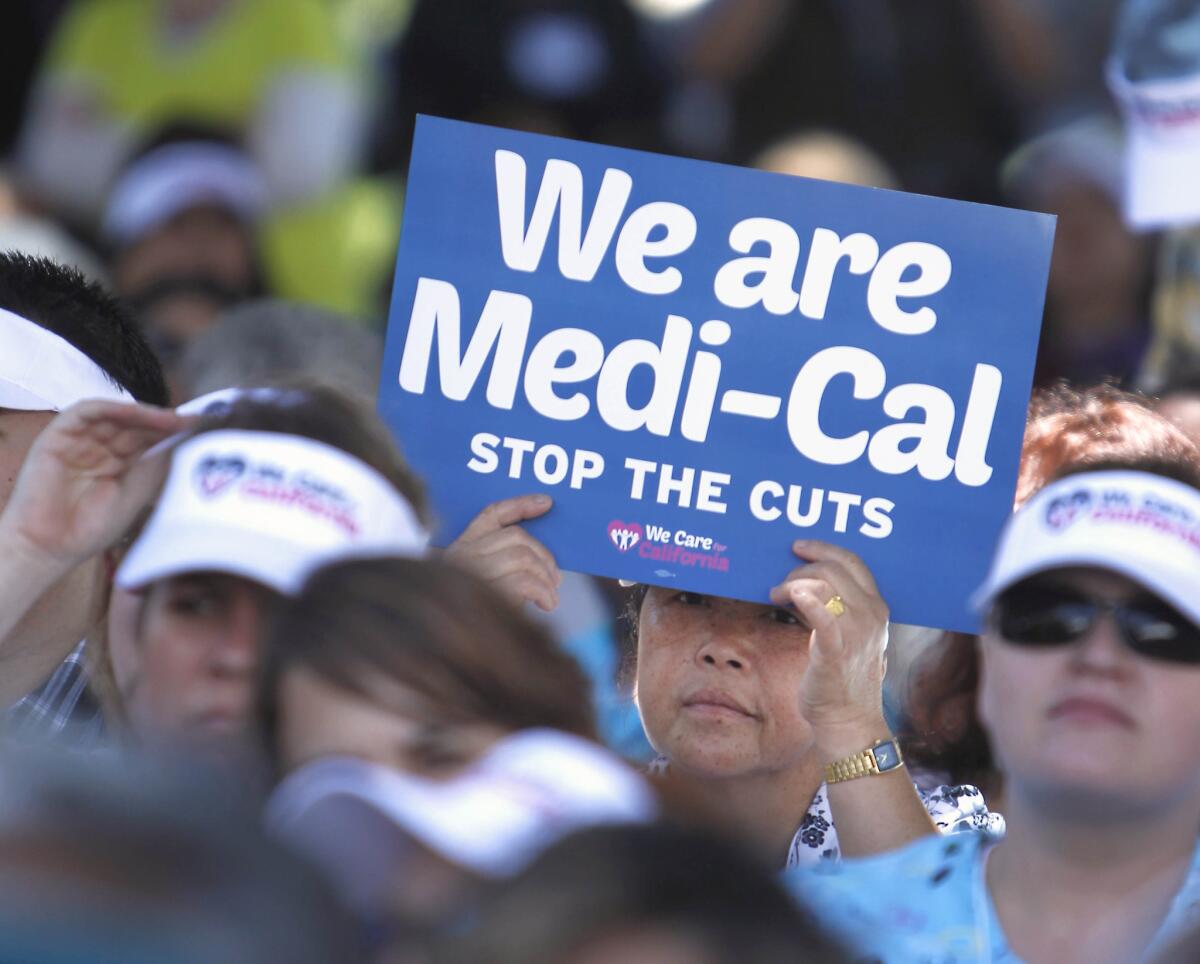The budget vs. Medi-Cal

- Share via
Gov. Jerry Brown signed the state’s budget for the coming fiscal year into law Thursday, marking the third consecutive year that this particular task has been accomplished on time — a sharp contrast to the prior decade’s routinely late budgets. And to their credit, Brown and the Legislature relied on comparatively few gimmicks to make ends meet, even as they started reinvesting in education, mental health, child care and other programs whose budgets were cut during the economic downturn. But one of the biggest initiatives in the budget — the expansion of Medi-Cal, the health insurance program for the impoverished — could be undermined by some of the cuts lawmakers did not undo.
The state’s improved fiscal picture is a direct result of the aforementioned cuts, along with the tax increases that voters approved in November. The state still faces real fiscal challenges, however, including huge unfunded liabilities in retiree benefits for state workers and a multibillion-dollar shortfall in unemployment insurance.
More immediately, the state is flirting with disaster in Medi-Cal. Lawmakers made the right choice in agreeing to extend the program to more than 1 million low-income Californians, with the federal government picking up the vast majority of the costs. But there may not be enough doctors, hospitals and clinics to treat the more than 7.5 million people already in the program if the state implements a long-delayed 10% cut in payments to healthcare providers later this year, as planned. Because the cuts are retroactive at least to 2011, many providers will see 15% reductions, and some hospital nursing units will have their payments cut by 25% to 40%.
It’s hard to predict what effect the reductions, which would save the state about $550 million a year, might have on the quality of care. But it’s inarguable that they would make it harder for the very poor to find doctors — specialists in particular — willing to tend to them. The Brown administration has said that it will reverse cuts that effectively deny access to providers in any area, but surveys by the California Healthcare Foundation have found a growing number of Medi-Cal enrollees already struggling to obtain care.
The situation will improve a bit for doctors and clinics providing primary care; the payment rates for those services will double next year, financed for the first two years by Washington. But that’s no help for specialists, hospitals and other providers.
The right ways to slow the growth of Medi-Cal are to improve the economy and tackle the public health problems and improper incentives that are driving all healthcare costs higher. California already pays providers less than almost every other state, and it spends the lowest amount per beneficiary in the country. Lawmakers and the Brown administration have to stop pretending that cutting provider rates are a painless shortcut to Medi-Cal savings.
More to Read
A cure for the common opinion
Get thought-provoking perspectives with our weekly newsletter.
You may occasionally receive promotional content from the Los Angeles Times.










